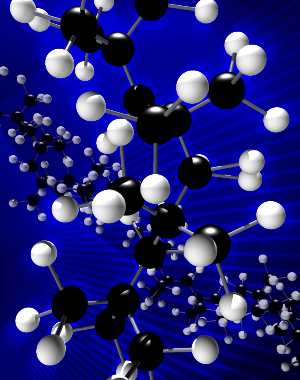
Polyisobutylene Chain
Polymer Science
Aqueous Carbocationic Polymerization
Dr. Lewis is the inventor of the only aqueous polymerization systems for polyisobutylene {(PIB): fuel/oil additives, lubricants, adhesives} and butyl rubber {(IIR): tires, tubes, adhesives}. This process provides a means for producing commercially useful rubbers without the need of solvents that are detrimental to the environment. For more information click here.
Decomposition of Carbocations by Sterically Hindered Pyridines (SHPs)
For many years SHPs were thought to only react with the smallest Brönsted acidic species (i.e. hydrogen ion, H+). Dr. Lewis was the first to discover that SHPs (e.g. 4-methyl-2,6-di-t-butylpyridine) can react with large acidic species (e.g. carbocations). Click here to read more about this topic.
Revision of the Complex Counteranion Theory
This theory was devised in the 1970s to explain how the chemical makeup of the counteranion influences ultimate polymer molecular weight in carbocationic polymerizations. Since then little modification has been made to it until Dr. Lewis' recent revisions. Click here  for more information.
for more information.
Synthesis of Polycarbonate Layered Silicate Nanocomposites
Nanocomposites are materials where the composite structure is arranged on the molecular level. This high degree of organization can led to significant enhancement of physical properties. Polymer layered silicates represent one class of nanocomposites where alternating layers of polymer and silicate sheets are arranged in a uniform manner. Click here to read about work Dr. Lewis did in this area.
